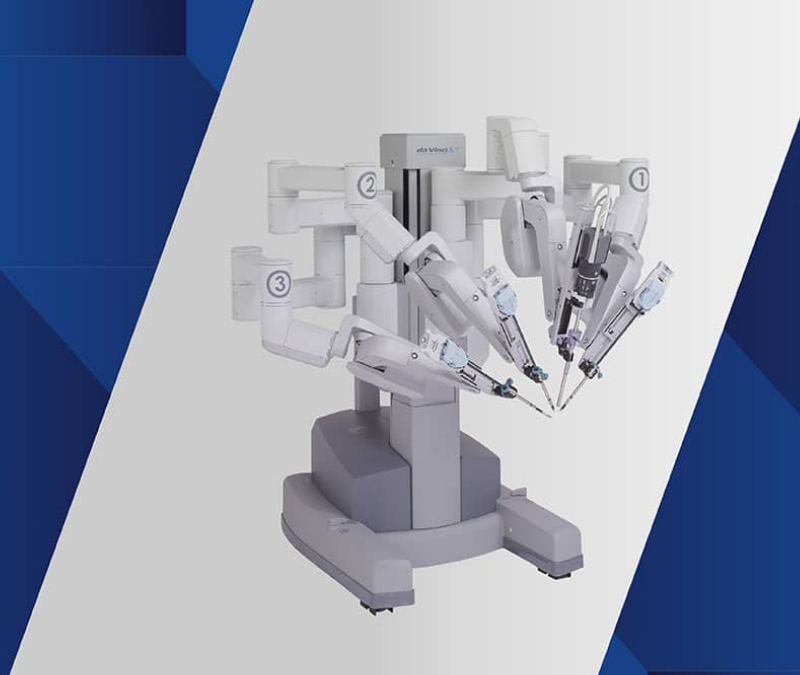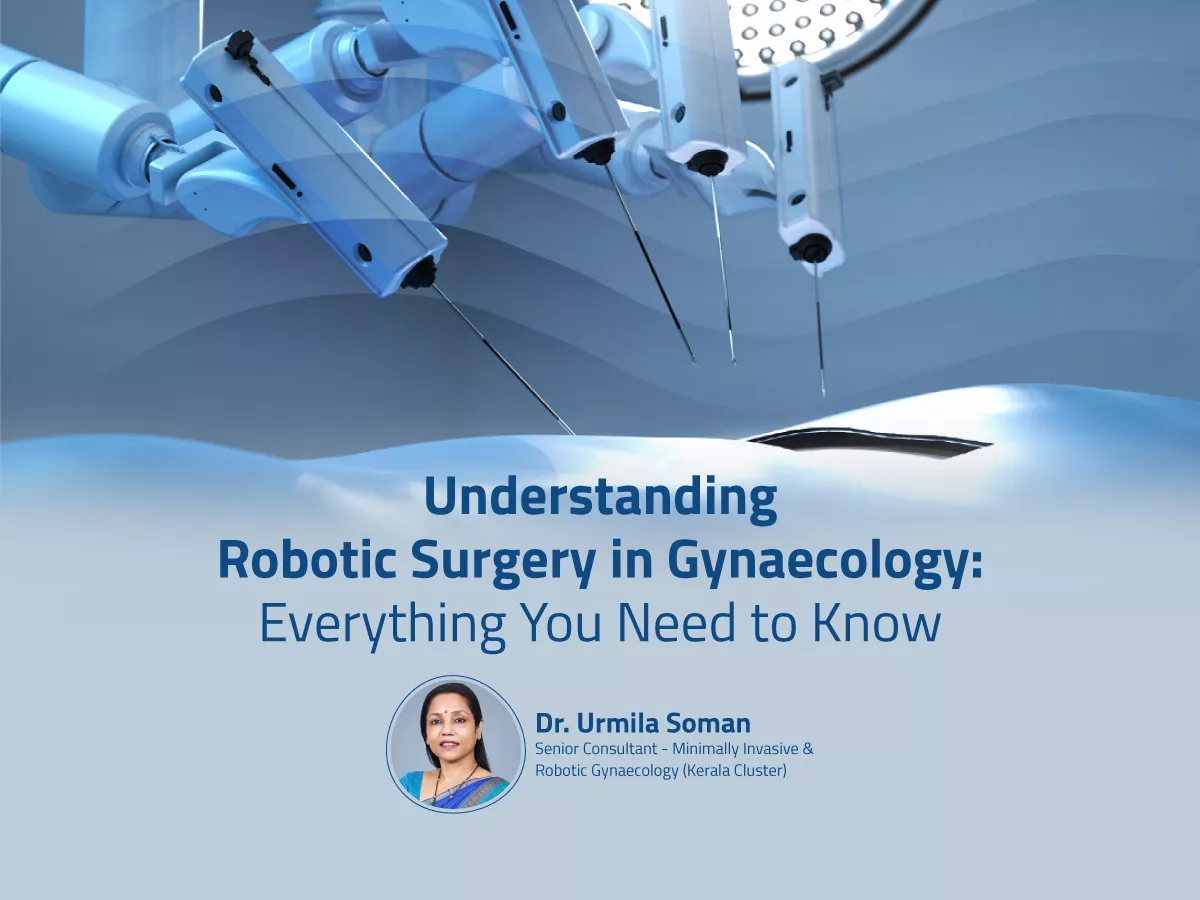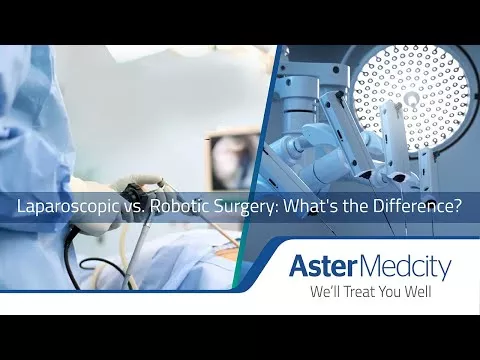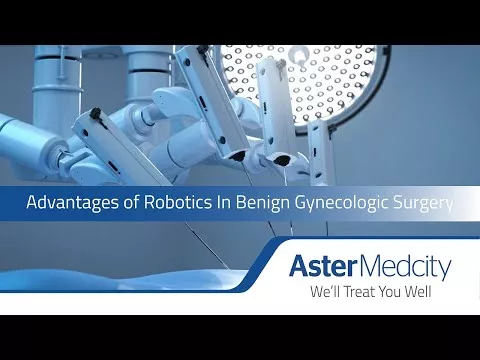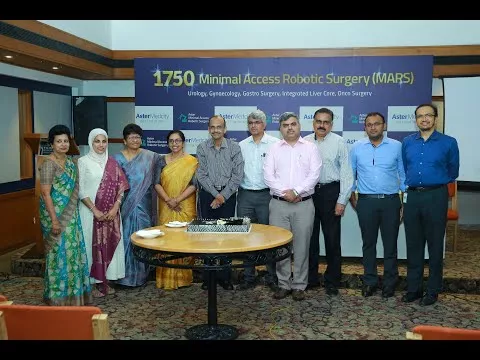Aster Centre for Minimally Invasive and Robotic Gynecology is a specialized department under Aster Centre of Excellence in Women’s Health. It combines robotic technology with gynecologic expertise to provide minimally invasive surgical options and comprehensive care for women's gynecologic conditions. It focuses on precision, patient-centered care, collaboration, research, and continuous improvement to deliver optimal outcomes and improve the quality of life for patients.
Robotic Gynecology Surgery
Robotic gynecology has indeed transformed the field of gynecologic surgery by offering patients improved outcomes, reduced invasiveness, and faster recovery times. It allows gynecologists to perform complex procedures with enhanced precision and minimal trauma, resulting in better patient experiences and outcomes.
Robotic gynecologic procedures are typically performed using minimally invasive techniques. Small incisions are made, through which robotic instruments and a high-definition camera are inserted. This approach reduces trauma to surrounding tissues, resulting in shorter hospital stays, reduced pain, minimal scarring, and faster recovery times for patients.
Advanced, minimally invasive robotic surgery provides improved control, flexibility, and precision throughout operations. In the treatment of complex gynecological conditions, such as endometriosis, pelvic organ prolapse, fibroids, and gynecologic cancers, it has emerged as a preferred option. This cutting-edge method is revolutionizing gynecologic surgery by offering women safer and more efficient options.
Benefits of Robotic Surgery
- For women with severe endometriosis or those who have had numerous abdominal surgeries, this method is safer and produces better results.
- It works very well for treating gynecologic cancers, adhesions, prolapsed pelvic organs, and large pelvic masses.
- Compared to traditional methods, there is less scarring, less blood loss, and much less postoperative pain.
- The recovery period is also quicker. For most patients, a short hospital stay is sufficient.
Laparoscopic Surgery
A keyhole or minimally invasive procedure is a cutting-edge method of gynecologic disease diagnosis and treatment. Ectopic pregnancies, fibroids, endometriosis, and ovarian cysts are all frequently treated with this cutting-edge technique. Compared to open surgery, this minimally invasive procedure is safer and more effective for patients, greatly enhancing recovery time and results.
Benefits of Laparoscopic Surgery
- Laparoscopic surgery is used for conditions which need immediate attention, such as infertility evaluations, and for situations that combine diagnostic and therapeutic capabilities in a single procedure.
- This procedure ensures efficient treatment with the least amount of disturbance to the patient's body by offering a minimally invasive way to remove ovarian cysts, fibroids, and even the uterus.
- Shorter recovery times, less postoperative pain, and smaller incisions.
- Laparoscopic surgery is the preferred option for many gynecologic conditions because of its advanced precision, which guarantees better surgical outcomes while minimizing complications.
Services Offered
Full Spectrum of Benign Gynaec Surgeries
- Full-spectrum gynecological surgery is a comprehensive range of surgical procedures performed by experienced gynecologists. It includes both open and minimally invasive surgeries to treat the disorders that affect the female reproductive system. These treatments are used to treat ovarian cysts, fibroids, endometriosis, complex reconstructive surgeries, and other gynecological conditions.
- Hysterectomy
- Myomectomy
- Ovarian Cystectomy
- Repeat Surgery
- Frozen Pelvis
- Complex Masses
- Endometriosis Clearance
- Staging
- Sentinel Lymph Node Mapping
- Pelvic Lymphadenectomy
- Omental Biopsy
- Pelvic Repositioning of Ovaries
Pelvic Reconstructive Surgery
- Robotic-assisted pelvic organ prolapse repair: Surgical repair of pelvic floor disorders, such as uterine prolapse or bladder prolapse.
- Sling Surgery for Uterine Prolapse (Conservative Surgery)
- Ovarian Pexy
- Neovagina Creation
- Pelvic Floor Reconstruction
- Tubal Recanalization
Uro-Gynaecology Surgery
- Burch Colposuspension for Urinary Incontinence
- Cystocele Repair
- Pelvic Organ Prolapse - Sacred Corpopeky & Pectopexy
- Stress Urinary Incontinence - TVT- O and TOT
Hysteroscopy Surgery
- Robotic-assisted hysterectomy: Removal of the uterus, either partially or completely, for conditions such as uterine fibroids, endometriosis, or gynecologic cancers.
- Diagnostic/Operative
- Polypeltomy
- Septum Resection
- Myoma Resection
- Endometrial Ablation
- Tubal Cannulation
Robotic myomectomy: Removal of uterine fibroids while preserving the uterus.
Robotic-assisted ovarian cystectomy: Surgical removal of ovarian cysts.
Robotic-assisted endometriosis surgery: Excision or removal of endometrial tissue outside the uterus.
Robotic-assisted reproductive surgeries: Procedures such as tubal re-anastomosis or ovarian cystectomy for fertility preservation.
Blogs
The source of trustworthy health and medical information. Through this section, we provide research-based health information, and all that is happening in Aster Hospital.

